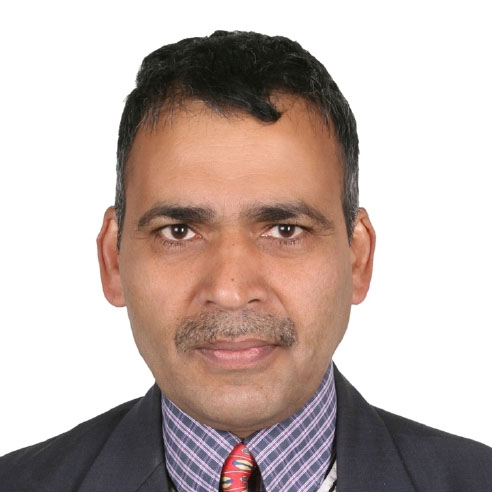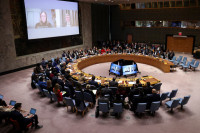Columns
Election 2022: Some old lies, some new
Alliances have nothing to do with long-held party policies, good governance, economic delivery, foreign policy or national interests.
Balmukunda Regmi
Elections are only a few days away. Political parties are trying their best to grab as many seats as possible. To the contenders, elections are always challenging, but most parties and candidates this time are more unsure of their stock.
This time, none of the major parties dared to run alone. The Nepali Congress (NC), the second largest party with 63 of 275 seats in the outgoing House of Representatives (HoR), confesses it is unable to get a single-party majority. It aims to lead the next coalition government. The CPN-UML—the largest party (121/275) in the last HoR—claims it will win a majority. But the fact that it has not only fractured since then but also splintered (23 members out of 121) and organised as CPN-Unified Socialist and joined the NC-led coalition means a double loss to the party.
Parties have little room to increase their share of the 110 proportional seats. Depending on how many parties will be able to enter the elite club of national parties, that is, to win at least one first-past-the-post (FPTP) seat and 3 percent of total valid votes nationwide, the shares of larger parties can go up or down a few seats. This means that the CPN-UML and the NC each may grab about 40 proportional seats while the CPN-Maoist Centre may win about 17 seats. Election slogans help the parties attract some votes, but given that the percentage of party-wise votes in the 2022 local elections has not deviated much from the previous five years, the changes, if any, will mainly come from the Rastriya Prajatantra Party (RPP) and some newly emerged parties such as the the CPN-Unified Socialist and the Nepal Independent Party (NIP).
Alliances
This is true for all old parties except the Nepal Workers' and Peasants' Party (NWPP). The NWPP has gradually lost its strongholds outside Bhaktapur, but it is almost certain to win Bhaktapur-1 in the upcoming election. Seeing no point in winning one more seat through unnatural alliances, NWPP is standing alone. So far, the newly established NIP has also not declared an alliance with any party.
The most important basis for alliances has stemmed from the personal fear of top leaders losing elections. Some party chiefs have moved to new constituencies where their parties performed well in the last local elections. In extreme cases, parties have taken the election symbol of another party, fearing that people will not recognise their symbol. Kamal Thapa, the chairperson of the RPP Nepal, and Hridayesh Tripathi, the chairperson of the Janata Pragatisheel Party, are not only aligning with the CPN-UML but also using its symbol. Similarly, the Nepal Socialist Party is using the CPN-Maoist Centre’s symbol.
Parties in alliances aim at grabbing maximum FPTP seats. In alliances, the small parties enter the HoR even if they cannot win proportional seats. Besides, parties hope to be a part of the coming cabinet through alliance, though some parties like Rastriya Janamorcha (RJ) opt not to join the Cabinet.
Alliances have nothing to do with long-held party policies, good governance, economic delivery, foreign policy or national interests. We need not look too far to see how an important member of the NC-led five-party alliance Rastriya Janata Party (RJP), broke with NC and allied with CPN-UML, just to gain one additional HoR candidacy in Madhesh Province. In getting RJP’s support, UML mercilessly dropped Loktantrik Samajwadi Party (LSP); the latter now has become a part of the NC-led alliance. Other examples are alliances between anti-federalist Rastriya Janamorcha (RJ), diehard federalist CPN-Maoist Centre, monarchist RPP and republican CPN-UML. Alliances move to such extremes that if some leader dares to rebel against the party leadership and files for candidacy as an independent, the opposing alliance quickly extends its support to the rebel candidate. The UML withdrew its candidacy in support of NC rebel Dinesh Koirala in Chitwan-3. The alliance led by the NC decided to back UML rebel Prabhu Sah in Rautahat-3 and Ghanashyam Bhusal in Rupandehi-1. The enmity between the NC-led alliance and the CPN-UML is so strong that when the CPN-Unified Socialist’s Raju Gurung’s Rupandehi-2 candidacy was rejected by the Election Commission, the NC-led alliance supported the Janamukti Party candidate.
Populist slogans
Except for some newcomers, the political parties have repeated their old slogans as if the voters have forgotten their dazzling past promises. For instance, in their 2017 joint election manifesto, the CPN-UML and the CPN-Maoist Centre promised monorails, ships, and a monthly old age allowance of Rs5,000. The two parties merged and swore that their double-piloted Nepal Communist Party would give the people good governance, affluence, peace and justice. But in just three years, they divorced, leaving a wreck behind, claiming credit for whatever good they did and blaming the other copilot for all the wrongdoings. Similarly, after the humiliating loss in the 2017 elections, the NC promised to remain a responsible opposition and not to play a dirty game of power politics, but it broke the promise readily.
Most of these parties have similar offers. They promise to create full employment (CPN-UML 500,000, CPN-Maoist Centre 400,000, NC 250,000 per year) or partial employment (RPP 1 million per year). They highlight their vision of free basic healthcare to all as guaranteed in the constitution of Nepal, but soon stumble “health insurance will be freely provided for the poor and underprivileged ones.” The parties dream big and spell any number they like: In the last elections, they promised that in five years, per capita income would double, yearly tourist arrivals would reach 2 million, and per day tourist expenditure would reach $100. If the parties differ in some numbers, they usually compensate elsewhere.
Blame games over plans
Most parties agree that the political changes have failed to deliver Nepalis good governance and prosperity. The NC-led alliance says the republic system is still in its infancy, facing retrograde threats from monarchists and CPN-UML leader KP Sharma Oli. CPN-UML says its efforts of economic build-up were disturbed by the opponents, and the Oli government was brought down by forces who were unhappy with his nationalistic actions like passing Nepal’s resolution to bring back Limpiyadhura and Kalapani and amending Nepali Constitution to accommodate the changes in Nepal map. Monarchists like RPP blame the major parties for creating “many kings” in place of one, spending national coffers to feed different levels of the federal system and party cadres. Newly formed parties like NIP promise to fight corruption and deliver good governance. Importantly, the parties fail to talk of the taxes they will impose, how they will collect the revenues, or the inflation people will have to bear.




 5.14°C Kathmandu
5.14°C Kathmandu















